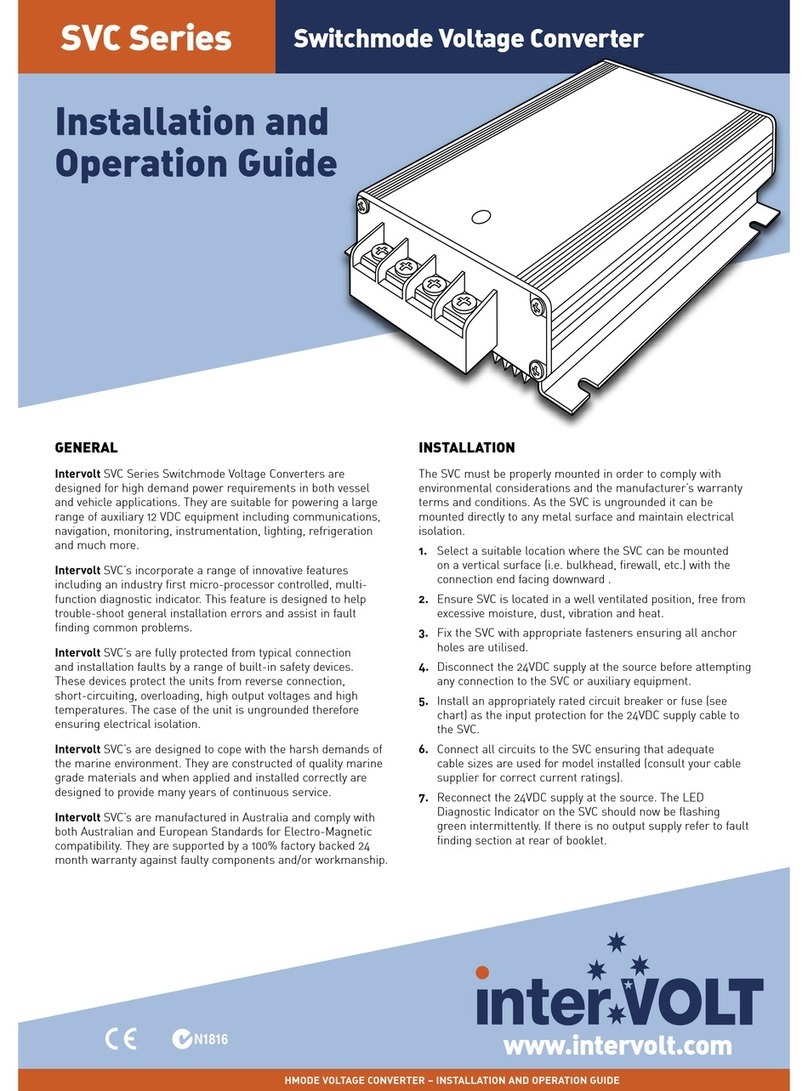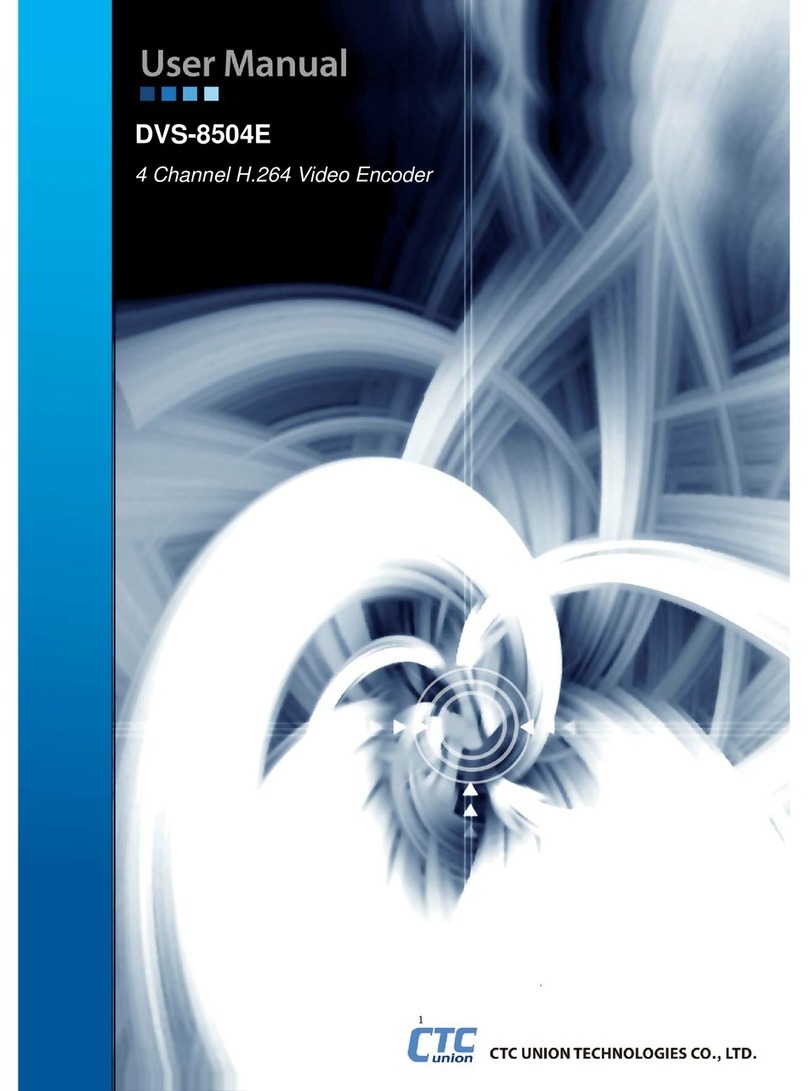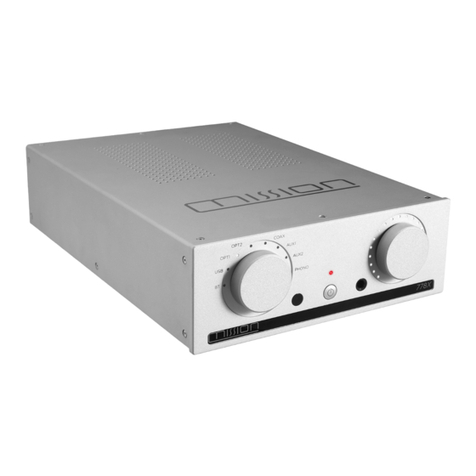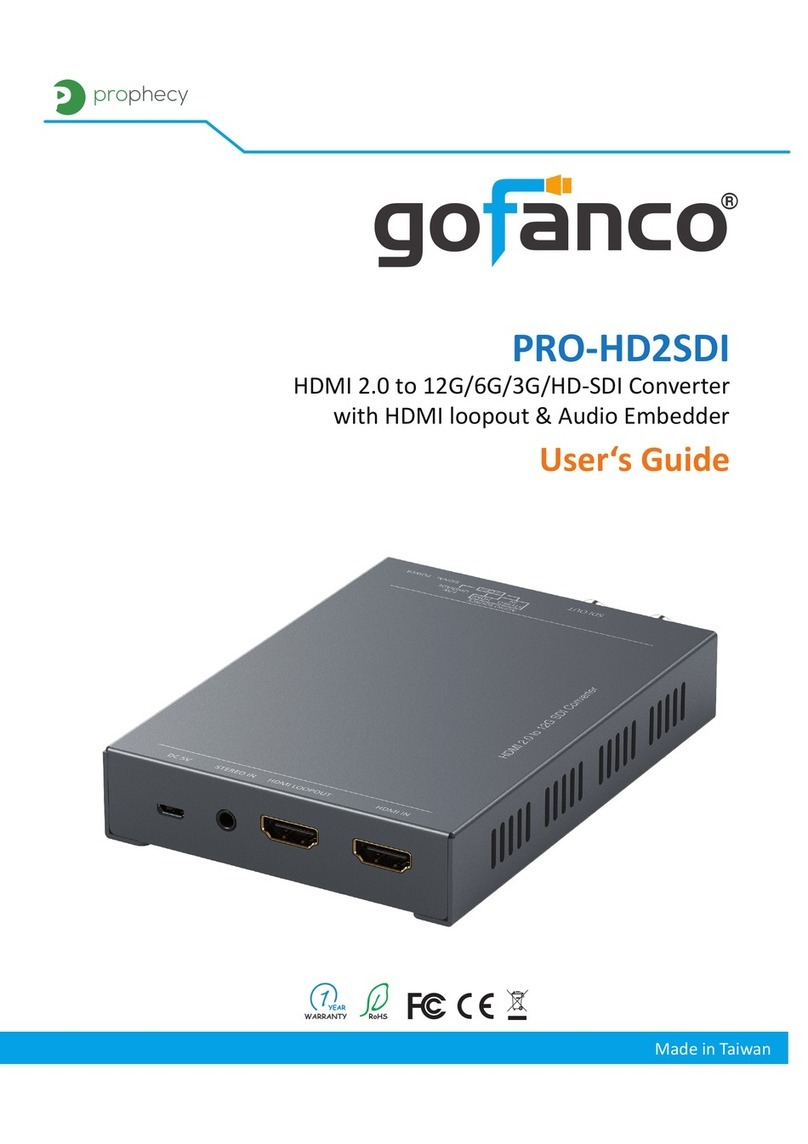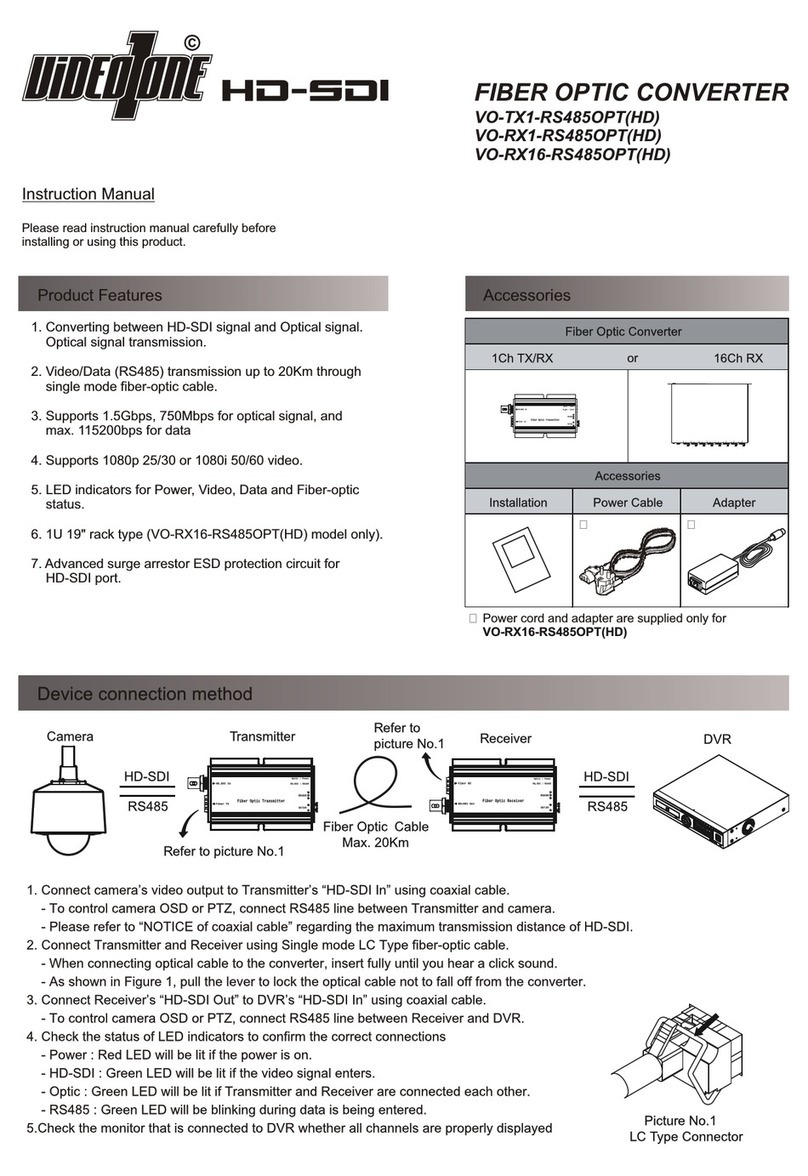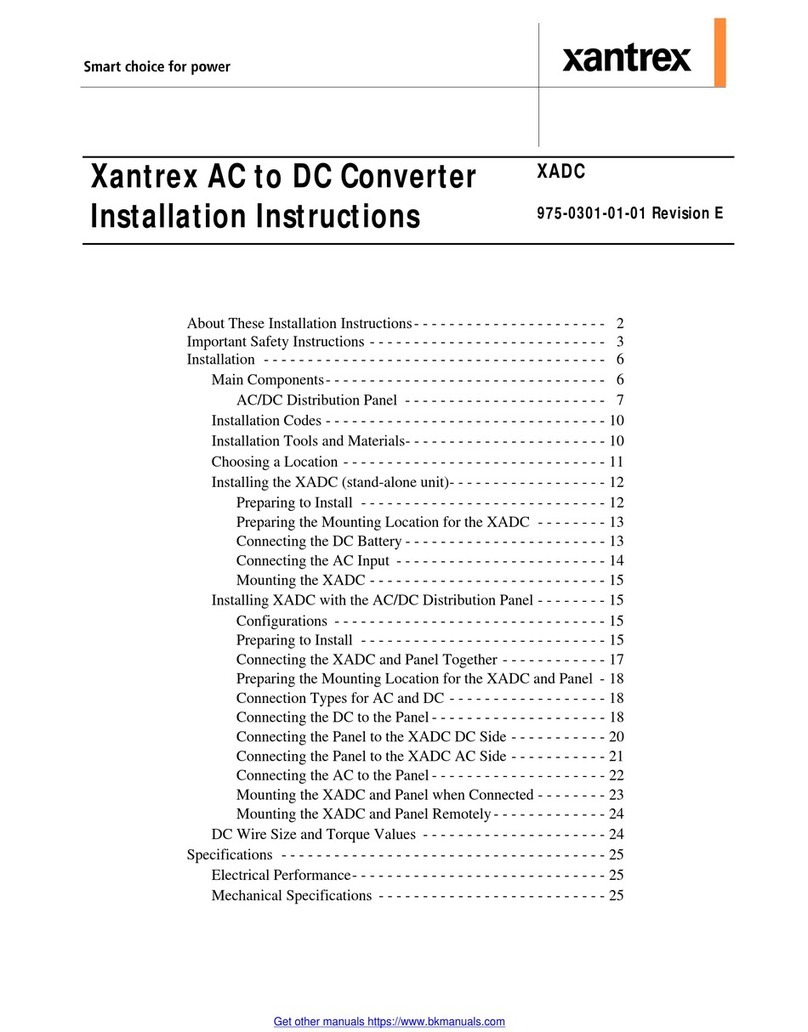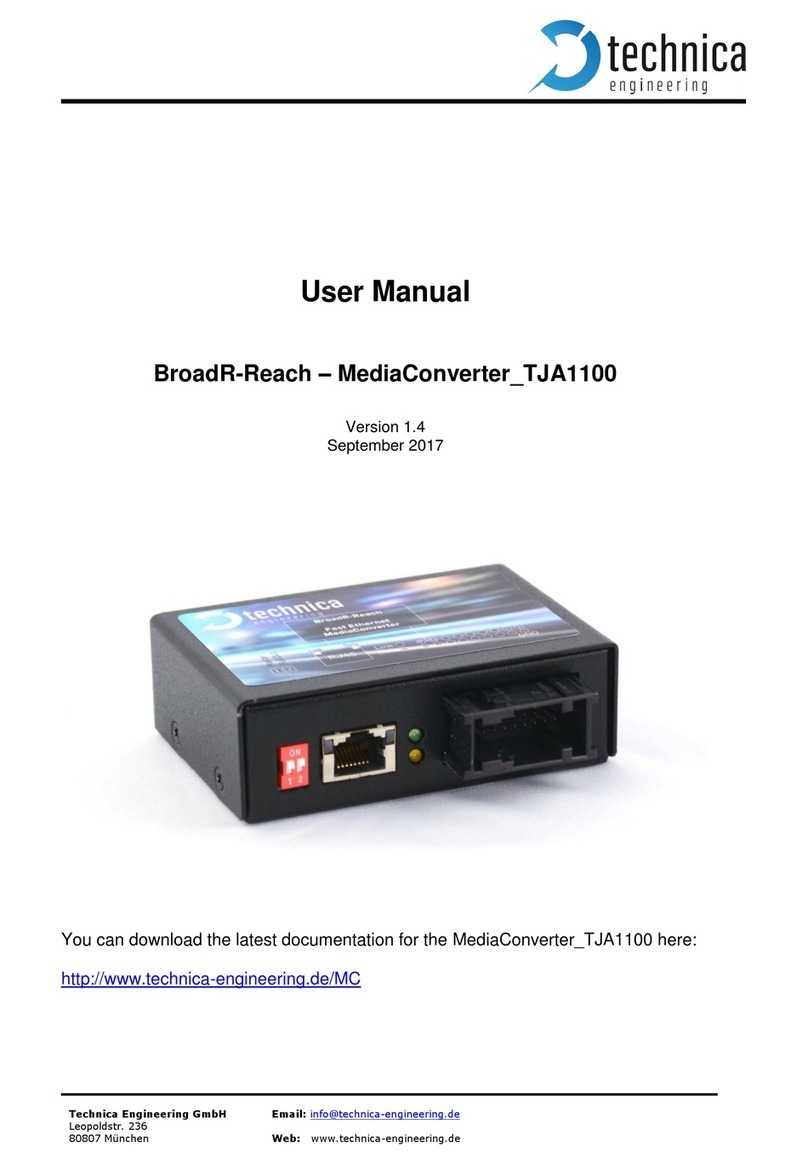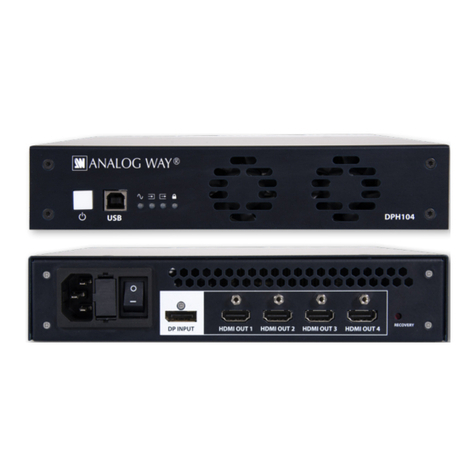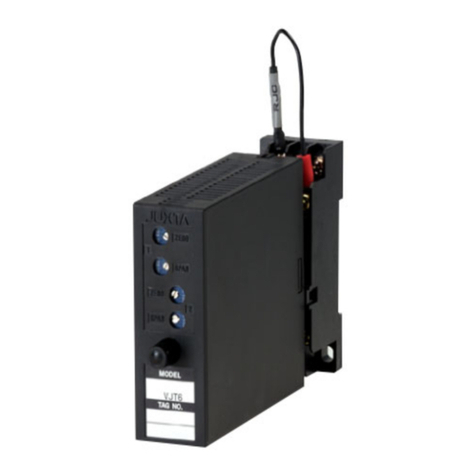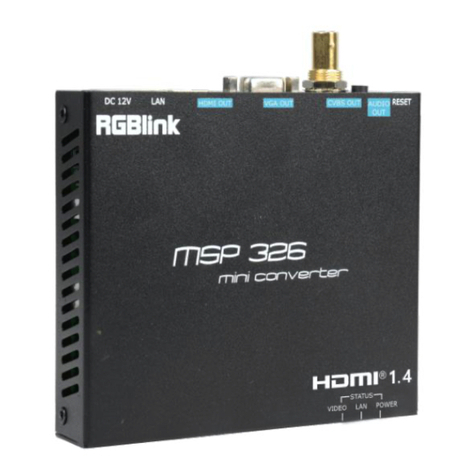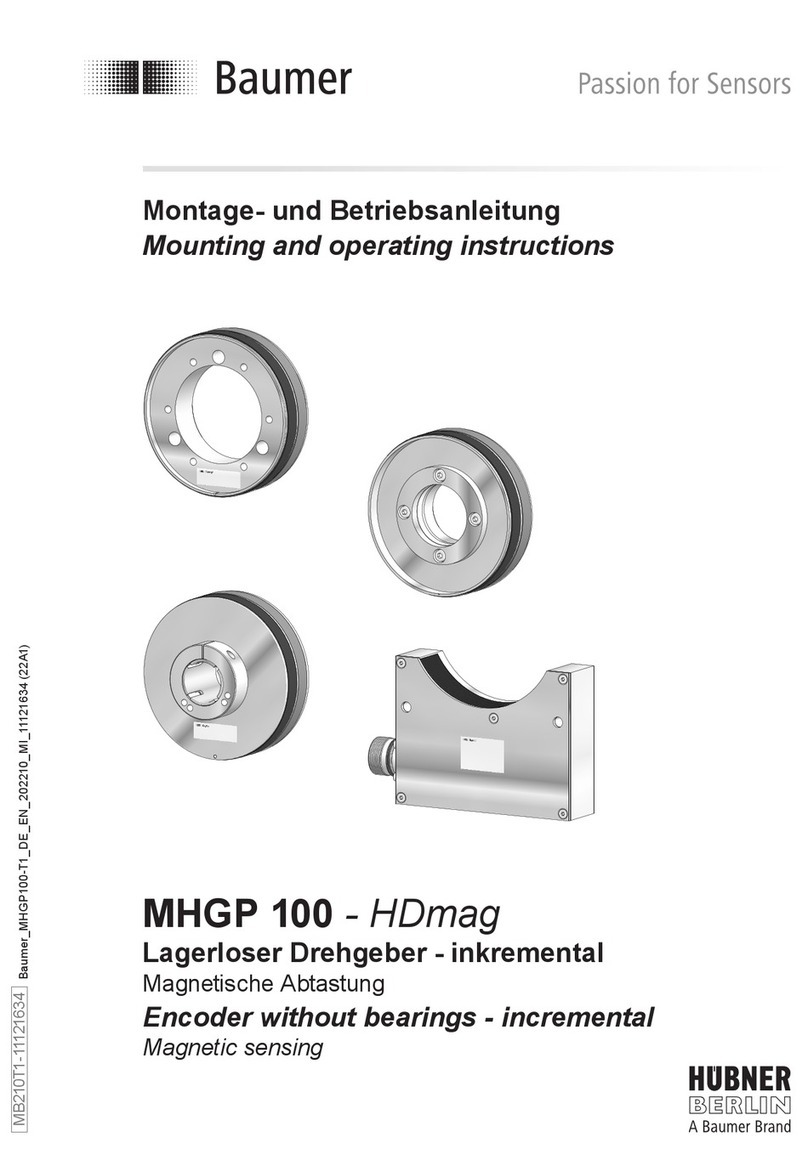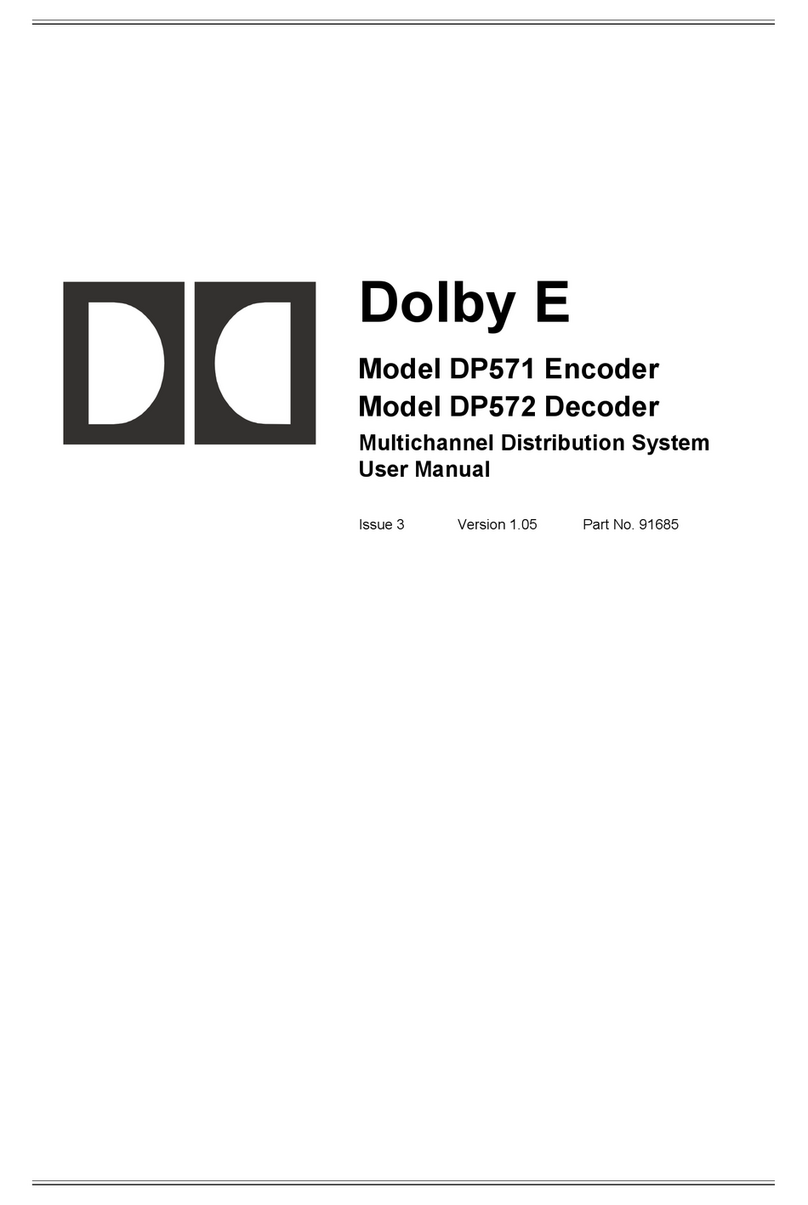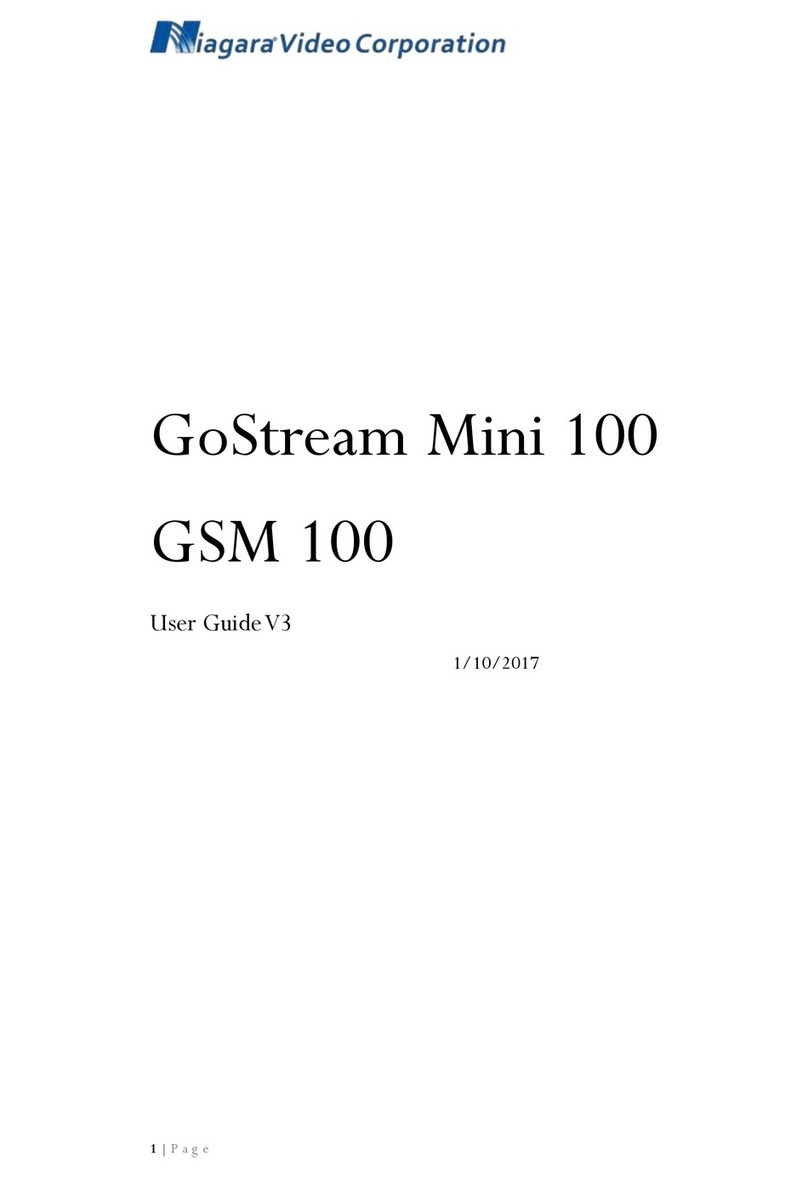intervolt Gen II Maxi Series User manual

WELCOME
Thank you for choosing an interVOLT voltage converter ...
A 24VDC to 12VDC voltage converter is used primarily for connecting auxiliary 12VDC equipment in
a 24VDC wired application. The voltage converter must be sized according to the load connected in
order to ensure good performance, safety and longevity. Listed below are just a few of the features and
benefi ts you have gained in selecting an interVOLT voltage converter.
Intervolt SVC Series Switchmode voltage converters are designed for high demand power requirements
in transport, telemetry, alternative energy applications and the like. They are suitable for powering
a large range of auxiliary 12 VDC equipment including communications, navigation, monitoring,
instrumentation, lighting, refrigeration and much more.
Intervolt SVC’s incorporate a range of innovative features including an industry fi rst, micro-processor
controlled operator interface for the control and monitoring of the many SVC functions. This feature is
designed to help trouble-shoot general installation errors and assist in fault fi nding common problems.
Intervolt SVC’s are fully protected from typical connection and installation faults by a range of built-in
safety devices. These devices protect the units from reverse connection, short-circuiting, overloading,
high output voltages and high temperatures.
Intervolt SVC’s are designed to cope with the demands of the harshest applications and will operate in
high temperature, high humidity environments. They are constructed of quality marine grade materials
and when applied and installed correctly are designed to provide many years of continuous service.
Intervolt SVC’s are designed and assembled in Australia and comply with relevant Australian and
international standards for electro-magnetic compatibility (EMC). They are supported by a 100% factory
backed 24 month warranty against faulty components and/or workmanship.
1
CONTENTS
OVERVIEW ............................................ 2
SVC MAXI SERIES GEN II ............................ 2
INSTALLATION ....................................... 3
NOTICE! .............................................. 3
WIRING ............................................... 4
INITIAL SET-UP ..................................... 7
OPERATION ........................................... 7
EXTENDED FEATURES ............................. 9
SCHEMATICS ........................................ 12
Voltage Converter
Standard Installation – Common Ground .......... 12
Standard Installation – Isolated Ground ............ 13
Parallel Installation – Common Ground ............ 14
Parallel Installation – Isolated Ground ............. 15
Battery Charger
Standard Installation – Common Ground .......... 16
Standard Installation – Isolated Ground ............ 17
Auxiliary
External Alarm Output .............................. 18
Remote Switching – minor output connected ...... 18
Remote Switching – manual or automatic control . 19
Remote Switching – with ignition switch control ... 19
OPERATOR INTERFACE ............................ 20
INTRODUCTION ..................................... 20
POWER ICON ........................................ 21
FAN ICON ........................................... 21
TEMP ICON ......................................... 22
INPUT ICON ........................................ 23
OUTPUT ICON ....................................... 24
CHARGE ICON ....................................... 26
OUTPUT LOAD INDICATOR ......................... 27
OUTPUT VOLTS INDICATOR ........................ 27
TROUBLESHOOTING ............................... 28
SPECIFICATIONS .................................... 30
WARRANTY POLICY ................................ 33
GEN II
MAXI SERIES
Voltage
Converter
INSTALLATION & OPERATION
MANUAL
interVOLT is a registered trademark of Amelec Australia Pty Ltd in Australia and various other countries
including the UK and USA and as such is protected by the relevant laws of the country of registration.
© 2010. All rights reserved. The entire contents of this instruction manual shall remain the property of
Amelec Australia Pty Ltd and should not be reproduced without written permission.
Manual No. MAXISVCG2 R1-0
Manufactured by Amelec Australia Pty Ltd
16 Parkinson Lane, O’Connor, WA 6163, Australia
www.intervolt.com

2
OVERVIEW
SVC MAXI SERIES GEN II
The second generation interVOLT SVC Maxi series voltage converters are the evolution of the
original and renowned SVC models fi rst released in 2001. The GEN II Series is not just a cosmetic
‘makeover’ but rather a complete new product from the ground up. The all new design features
complete digital control with a specifi cation second-to-none. Here are just a few of the new
features and benefi ts exclusive to the new range:
– Unique operator interface for control and monitoring
– Handy charge mode for charging a 12V auxiliary battery (2 stage)
– High resolution voltage output of less than 0.5% under any load
– Peak effi ciency of 94% (better than 90% under most load conditions)
– Remote operator control to turn unit on/off with signal current only
– Separate 250mA 13.5V (nominal) output for use when remote is off
– Multifunction alarm output for fault and pre-emptive warnings
– Temperature and speed controlled internal cooling fan (hydro bearing)
– Compact design and can be mounted vertically or horizontally
– Heavy duty termination with separate, removable terminal cover
– 24 months warranty (subject to specifi c terms and conditions)
– High quality assembly featuring marine grade hardware
– Conformally coated printed circuit board assembly (tropicalisation)
This manual contains comprehensive information on the installation, set-up and use of the all
new SVC voltage converters and is applicable to GEN II models only. Whilst every care has been
taken in the preparation of this manual, Amelec Australia Pty Ltd offers no guarantee, express
or implied, and accepts no liability for any inaccuracies, errors or omissions in its content.
Specifi cations are subject to change without notice.
4
INSTALLATION
WIRING
IMPORTANT! Ensure adequately rated cables are used for the maximum load of the SVC model
installed. If uncertain, consult your cable supplier quoting the continuous rating of the SVC and the
length of cable on both input and output. The input current draw is approximately 50% of the output load
(subject to V in and V out references). Undersizing the cable will result in poor performance, over heating,
a reduction in longevity and may jeopardise your warranty in the event of a failure.
Disconnect the 24VDC supply at the source before attempting any connection to the input terminals of the
SVC or equipment to the output.
Install an appropriately rated circuit breaker or fuse (see chart below) as the input protection for the
24VDC supply cable to the SVC.
EXTERNAL INPUT FUSE REQUIREMENT CHART
SVC Model No. SVC Rating Input Fuse
SVC241225G2 25 Amps cont. 25 Amps
SVC241235G2 35 Amps cont. 35 Amps
Connect all input wiring to the SVC ensuring correct polarity. Failure to observe correct polarity will
result in the internal protection circuit blowing the fuse. This circuit protects the SVC from catastrophic
damage. The internal fuse is not user serviceable. In the event the SVC is incorrectly reverse polarity
connected, the unit must be returned to vendor for servicing.
The power terminals utilise M5 combination head screws for excellent conductivity. It is recommended
that proper tinned drawn-copper cable lugs are used for termination. An example of this item is
depicted on page 6.
3
NOTICE!
The SVC must be properly installed in order to comply with environmental operating considerations and
the manufacturer’s warranty terms and conditions.
The SVC is constructed from marine grade materials and the printed circuit board has been conformally
coated (tropicalised) to protect the SVC from condensation and humidity. It is NOT however, waterproof.
LOCATION
Select a suitable location where the SVC can be mounted. Ensure there is adequate ventilation and that
the location is free from excessive moisture, dust, vibration and heat. The SVC is designed for installation
in a protected environment.
ORIENTATION
The SVC can be mounted vertically or horizontally. The SVC should be installed on a hard fl at surface
– do not install on an upholstered or insulated surface. Ensure at least 50mm of clearance all around
from other equipment. There should be no restrictions in the way of the ventilated end cap.
MOUNTING
The SVC unit should be installed with appropriate fasteners ensuring all anchor holes are utilised.
The mounting hole diameter is 5mm and it is recommended that a fastener with a diameter (major
thread) of no less than 3.5mm be used. Do not overtighten.
WIRING
In order to ensure safety, good performance and long life the SVC should be wired according to
the method detailed overleaf. Please refer pages 12-19 for schematics of the various wiring circuits
available.
INSTALLATION
INSTALLATION
5
INSTALLATION
Once the input supply is terminated the SVC can be powered up. Upon reconnecting the 24VDC supply the
POWER indicator is illuminated intermittently (pulsing green) indicating the SVC is operational.
If any other icon is illuminated or the POWER indicator is not illuminated, refer to the troubleshooting
guide on pages 28-29.
The SVC is now in standby and operating at the factory default output of 13.0VDC. The output can now be
adjusted in one of two ways depending upon the application:
i. For use as a voltage converter – output voltage is selectable between 12.0V and 14.0V in 0.5V
increments. Please refer to the set-up instructions on pages 7-8 before connecting the output wiring
to the 12V equipment.
ii. For use as a battery charger – output voltage is set to battery charging mode (standard lead acid
battery only). Please refer to the set-up instructions on pages 7-8 before connecting the output wiring
to the 12V battery.
Before connecting the output wiring ensure the input supply is isolated. Once the output is connected the
SVC can again be powered up and is now ready for operation.
In addition to the main power terminals there is an auxiliary terminal block located between the input
and output terminals. See over for further information on wiring the auxiliary terminal block.
NOTE: It is also possible to wire the SVC’s in parallel to increase the output current rating. For example,
two 25A rated units can be paralleled for a combined total of 50 Amps continuous, three for 75 Amps, etc.
The wiring must be appropriately rated to carry the total load and the output voltage setting of each unit
MUST be the same i.e. 13.0V. The SVC’s can ONLY be paralleled when used as voltage converters and
NOT when used in battery charging mode. Please refer to pages 14 and 15 for schematics.

6
INSTALLATION
Auxiliary Terminal Block: The auxiliary terminals are optional and
not required for operation of the SVC, however they do provide some
very useful functions. Please refer to pages 9-11 for details of the
specifi c control and monitoring functions of the auxiliary circuits.
When connecting any of the optional auxiliary circuits (terminal
block) the wiring used is for low power circuits and should be wired
according to the schematic on pages 18-19. For reference purposes
the maximum current for each of the three connections is as follows:
• Terminal A: This is the external alarm output connection and is
limited to 250mA @ 13.5VDC (nominal).
• Terminal M: This is the memory (or bypass) output connection
and is limited to 250mA @ 13.5VDC (nominal).
• Terminal R: This is the remote control input and is signal
current only. Supply is 8-32VDC via a control switch.
When wiring to the auxiliary terminal block it is recommended that
proper boot-lace or ferrule type crimp connectors are used (see below).
The terminating tunnels in the auxiliary terminal blocks are a cage
type and do not need excessive force to make good contact.
Do not over-tighten the terminal screw.
12mm
MAX
5.0-6.0mm
COPPER LUG BOOT-LACE FERRULE
4.0mm
diameter
MAX
2.0mm
diameter
MAX
INPUT AUX.
+24V –0V
M RA
+12-0V
OUTPUT
INPUT AUX.
+24V –0V
M RA
+12-0V
OUTPUT
8
Step 2 – Changing Output Setting
Press the SET button again to scroll through the display incrementally to select the desired
setting for your specifi c application as follows:
• For use as a voltage converter the output setting can be adjusted between 12.0V and 14.0V
in 0.5V increments on the OUTPUT VOLTS bar display. It is important to
ensure the equipment connected to the output of the SVC is correctly rated for the voltage you
have selected.
• For use as a battery charger the CHARGE icon must be selected which changes the output
from a continuous DC regulated supply to a special two stage charging protocol (sample curve
data available upon request). The two stages consist of a boost cycle of 14.4V and a fl oat cycle of
13.6V. These voltages are not adjustable.
Step 3 – Saving Output Setting
Simply release the SET button at the desired point and the output will adjust automatically to
the new setting after a few moments. The OUTPUT icon will pulse rapidly and then disappear
indicating the setting has been successfully saved.
The new setting will be displayed for a further 10 seconds as confi rmation of the new setting. The
selected setting will now be permanently memorised but can be changed at any time if necessary.
NOTE: The factory default settings can be reset at any time. Press and hold the SET button
for 30 seconds until all icons on the operator interface display are illuminated (pulsing).
Release the SET button and the factory default settings will be restored at which point the
illuminated icons will disappear.
OPERATION
7
OPERATION
INITIAL SET-UP
One of the major features of the Gen II SVC is the ability to adjust
the output voltage when used as a converter or alternatively,
select a two stage voltage curve when used as a battery charger
(lead acid only).
As detailed in the wiring section, the output voltage of the SVC
should ideally be selected before connecting the output supply
to the 12V equipment or battery. The SVC output can however,
be adjusted at any time providing there is power on the input and
NO load on the output.
The output voltage cannot be adjusted in battery charging mode.
IMP ORTANT: A battery should only be connected to the SVC in
battery charging mode and NOT in voltage converter mode.
Step 1 – Enter Output Set-Up Mode
To adjust the output voltage press and hold the SET button
for 5 seconds until the 5 bars of the OUTPUT VOLTS indicator
and the CHARGE icon are illuminated
intermittently (fl ashing).
At this point release the SET button . The OUTPUT icon
and the factory default voltage setting of 13.0V is displayed on the
OUTPUT VOLTS indicator .
INPUT AUX.
+24V –0V
M RA
+12-0V
OUTPUT
INPUT AUX.
+24V –0V
M RA
+12-0V
OUTPUT
9
OPERATION
EXTENDED FEATURES
The GEN II SVC has a range of optional features which can be
utilised for control and monitoring purposes.
These functions are enabled through the use of the auxiliary
terminal connections. This is a Euro style terminal block located
between the input and output terminals of the SVC.
The Euro style terminal block is a high quality three pole connector
used to terminate various control and monitoring devices or
auxiliary functions. There are no ferrous components in the
terminal block so there is much less risk of corrosion and therefore
poor contact.
Please refer pages 18-19 for schematics of the various wiring
circuits available.
External Alarm Output
This output (terminal A) is used for remote monitoring of the pre-
emptive and shutdown alarms of the SVC. Subsequently any alarm
condition displayed on the operator interface display of the SVC can
also be remotely monitored i.e. cooling fan fault, unit overheating,
low input voltage, output overload or short circuit.
Generally the output would be connected to a remote sounder/indicator but can also be used to activate a
relay coil to switch a larger warning device. It is important to note that the maximum power of the Alarm
output is limited to 250mA @ 13.5VDC.
INPUT AUX.
+24V –0V
M RA
+12-0V
OUTPUT
INPUT AUX.
+24V –0V
M RA
+12-0V
OUTPUT

10
OPERATION
Minor Power Output
A low power secondary or minor supply (terminal M) is available for very low current requirements such
as powering a device with a memory for example. This output can be utilised in a variety of functions
including the following:
• In conjunction with the Remote (R) input terminal and when the remote is used to isolate the SVC, the
Minor output is used as a low current secondary supply. For example, when a toggle switch is used
to remotely turn off the main 12V output of the SVC, a secondary supply is available to power essential
devices such as a digital clock, or security system or radio memory, etc.
• The Minor output can also be used as a trigger to operate the SVC as a relay device (see wiring
diagram on page 19). In this instance the M and R terminals are connected via any normally open
switch, either momentary or latching, in order to switch a 12VDC device from a 24VDC supply. For
example a 12VDC horn could be activated using a low current pushbutton, without having to run a
large cable (and return) to the dash in a truck or boat. The switching can be done using light signal,
rather than heavy power cable.
• Additionally, the M and R terminals can be connected with a control device to close the contacts
and activate the 12VDC supply automatically. An example of this application would be the automatic
operation of a 12VDC bilge pump from a 24VDC supply in an unattended vessel. The additional benefi t
here is that the fl oat switch used to activate the SVC need only be low power as it is switching signal
current only and not high current.
It is important to note that the maximum power of the Minor output is limited to 250mA @ 13.5VDC.
12
SCHEMATICS
VOLTAGE CONVERTER
Standard Installation – Common Ground
INPUT AUX.
+24V –0V
M RA
+12-0V
OUTPUT
FUSE
24V nominal
+–
+–
12V
12V 12V DC EQUIPMENT
11
OPERATION
Remote Switching Input
This input (terminal R) is used to isolate the 12VDC output of the SVC from the 24VDC input remotely using
any normally open control switch (N/O). This output can be wired in a number of ways including the
following:
• In conjunction with the Minor (M) output terminal which can be used as the trigger voltage when
connected with a normally open (N/O) switch such as a manual toggle or pushbutton remote control
switch or an automatic switch such as a fl oat switch.
• From a separate control device, such as an ignition switch feed, where there is a requirement to
activate or isolate the 12VDC output of the SVC from the 24VDC supply at a single point. For example
if it was convenient or necessary to isolate all 12V equipment, such as communications devices when
the vehicle ignition switch is turned off and the key removed.
• With any 8-32VDC remote trigger signal such as a daylight switch for automatic switching of 12VDC
night lighting from a 24VDC source as an example.
The Remote input requires a trigger voltage of 8-32VDC to activate the internal control circuit. This is
signal current (<5mA) only so the terminal can be wired with extra low power control or data cable.
NOTE: In the event the Remote (R) terminal is connected, the SVC will memorise the connection, even
if the input supply is disconnected. This is a requirement in order for the function to operate correctly.
Should it be necessary to discontinue the use of this function, a full system reset will need to be
performed. Isolate the 24V input to the SVC. Remove the wire connected to the Remote (R) terminal.
Re-apply the 24V supply – the POWER Icon does not illuminate. Press and hold the SET button
until the POWER icon illuminates (this will take approximately 1 minute). The SVC is now operational and
in standby mode again.
13
SCHEMATICS
VOLTAGE CONVERTER
Standard Installation – Isolated Ground
INPUT AUX.
+24V –0V
M RA
+12-0V
OUTPUT
+–
+–
12V
12V
FUSE
24V nominal
12V DC EQUIPMENT

14
HEADING
VOLTAGE CONVERTER
Parallel Installation – Common Ground
Output voltage setting MUST be the same for each unit connected in parallel.
SCHEMATICS
INPUT AUX.
+24V –0V
M RA
+12-0V
OUTPUT INPUT AUX.
+24V –0V
M RA
+12-0V
OUTPUT
+
FUSE
FUSE
24V nominal
–
+–
12V
12V
12V DC EQUIPMENT
16
HEADINGSCHEMATICS
BATTERY CHARGER
Standard Installation – Common Ground
INPUT AUX.
+24V –0V
M RA
+12-0V
OUTPUT
+–
+–
12V
+–
12V
12V
FUSE
24V nominal
15
HEADING
VOLTAGE CONVERTER
Parallel Installation – Isolated Ground
Output voltage setting MUST be the same for each unit connected in parallel.
SCHEMATICS
INPUT AUX.
+24V –0V
M RA
+12-0V
OUTPUT INPUT AUX.
+24V –0V
M RA
+12-0V
OUTPUT
+–
+–
12V
12V
FUSE
FUSE
24V nominal
12V DC EQUIPMENT
17
HEADINGSCHEMATICS
BATTERY CHARGER
Standard Installation – Isolated Ground
INPUT AUX.
+24V –0V
M RA
+12-0V
OUTPUT
+–
+–
12V
+–
12V
12V
FUSE
24V nominal

18
AUXILIARY
External Alarm Output
AUXILIARY
Remote Switching – minor
output connected
INPUT AUX.
+24V –0V
M RA
+12-0V
OUTPUT
RELAY
INDICATOR
BUZZERMUTE SWITCH
(OPTIONAL)
INPUT AUX.
+24V –0V
M RA
+12-0V
OUTPUT
OUTPUT
REMOTE
SWITCH
LED CLOCK
12V DC ESSENTIAL SERVICES
SCHEMATICS
20
OPERATOR INTERFACE
INTRODUCTION
The operator interface panel is a new and innovative introduction to the second generation SVC Maxi
series. This component allows specifi c control functions to aid the installer/operator in addition to
monitoring the status of the unit. The specifi c functions of the operator interface are as follows:
• User selectable voltage output from 12.0V to 14.0V in 0.5V increments to allow for voltage sensitive
equipment or voltage drop over long distances. This is factory set to 13.0V but can be changed at any
time and permanently saved in a non-volatile memory.
• A separate output function which can be selected for charging an auxiliary 12V battery connected
to the output. This automatic 2 stage curve features boost and fl oat modes to reliably maintain a
standard lead acid battery.
• A unique output load indicator which displays the load connected to the output (including overload) in
percentage terms. This indicator is a valuable tool and can be displayed at any time at the push of a
button.
• Useful pre-emptive warning of various fault conditions such as overload, over temperature, low input
voltage and low output voltage (battery charging mode only) prior to shutdown. These alarm functions
can be output for remote monitoring.
• Shutdown protection for critical fault conditions such as overload, over temperature, low input
voltage, fan failure and short circuit of output. These alarm functions can be output for remote
monitoring.
• Resetting of factory defaults at the push of a button.
19
AUXILIARY
Remote Switching – manual
or automatic control
AUXILIARY
Remote Switching – with
ignition switch control
INPUT AUX.
+24V –0V
M RA
+12-0V
OUTPUT
RELAY
FLOAT SWITCH
SWITCH
+ TO IGNITION
+ IGNITION SWITCH SUPPLY
INPUT AUX.
+24V –0V
M RA
+12-0V
OUTPUT
SCHEMATICS
21
OPERATOR INTERFACE
POWER ICON
The POWER indicator icon (heart) is illuminated
intermittently (pulsing green) under normal operating
conditions. No other icons or indicators illuminate in this
mode if there are no fault conditions. If a remote control
switch is connected it must be in the ‘on’ position for the
POWER icon to indicate.
FAN ICON
The FAN indicator icon displays a fault condition in relation
to the internal cooling fan of the SVC. In this condition
the FAN icon is illuminated continuously (steady red) and
the alarm output is activated (to external warning device
if connected). The SVC will continue to operate in this
condition providing the temperature does not escalate
to shutdown mode. The alarm condition is self-resetting
should the fault condition revert to normal. Cooling
fan failure can be as a result of burn-out, obstruction,
disconnection, etc (see troubleshooting guide)

22
OPERATOR INTERFACE
TEMP ICON
The TEMP indicator icon displays two possible fault
conditions in relation to the operating temperature of the
SVC, details as follows:
1. Pre-emptive alarm condition.
The TEMP icon is illuminated intermittently (pulsing
red) and the alarm output is activated (to external
warning device if connected). In this condition the SVC
internal temperature is rising and exceeding factory
preset level. The unit will continue to operate in this
condition providing the temperature does not escalate
to shutdown mode. The alarm condition is self-resetting
should the fault condition revert to normal.
2. Shutdown alarm condition.
The TEMP icon is illuminated continuously (steady red)
and the alarm output is activated (to external warning
device if connected).
In this condition the SVC internal temperature has risen
above the safe operating level. The unit will shut down
and no output is available until such time as the problem
is rectifi ed. The alarm condition is self-resetting should
the fault condition revert to normal.
24
OPERATOR INTERFACE
OUTPUT ICON
The OUTPUT indicator icon displays fi ve possible fault
conditions in relation to the OUTPUT (12V) voltage supply to
the SVC, details as follows:
1. Pre-emptive alarm condition.
The OUTPUT icon is illuminated intermittently (pulsing
red) and the alarm output is activated (to external
warning device if connected). In this condition the SVC
output (12V) is either:
– Over loaded intermittently (>100% but <125% of
continuous rating of SVC). The unit will continue to
operate in this condition providing the overload does
not escalate to shutdown mode. The alarm condition
is self-resetting should the fault condition revert
to normal. The load bar indicator will also indicate
amber (125%) in this condition.
– Low voltage (charge mode only). In this condition
the SVC output voltage is falling below factory
preset level. The unit will continue to operate in
this condition providing the voltage does not fall
to shutdown mode. The alarm condition is self-
resetting should the fault condition revert to normal.
23
OPERATOR INTERFACE
INPUT ICON
The INPUT indicator icon displays two possible fault
conditions in relation to the input (24V) voltage supply to the
SVC, details as follows:
1. Pre-emptive alarm condition.
The INPUT icon is illuminated intermittently (pulsing red)
and the alarm output is activated (to external warning
device if connected). In this condition the SVC input
voltage is falling below factory preset level. The unit will
continue to operate in this condition providing the voltage
does not fall to shutdown mode. The alarm condition is
self-resetting should the fault condition revert to normal.
2. Shutdown alarm condition.
The INPUT icon is illuminated continuously (steady red)
and the alarm output is activated (to external warning
device if connected). In this condition the SVC input
voltage has fallen below the permissible minimum
operating level. The unit will shut down and no output
is available until such time as the problem is rectifi ed.
The alarm condition is self-resetting should the fault
condition revert to normal.
25
OPERATOR INTERFACE
2. Shutdown alarm condition.
The OUTPUT icon is illuminated continuously
(steady red) and the alarm output is activated.
In this condition the SVC output is either:
– Over loaded continuously (>125% of continuous
rating of SVC). The unit will shut down and
no output is available until such time as the
problem is rectifi ed. The alarm condition is
self-resetting should the fault condition revert to
normal.
– Short circuited. The unit will shut down and
no output is available until such time as the
problem is rectifi ed. The alarm condition is
self-resetting should the fault condition revert to
normal.
– Low voltage (charge mode only). In this
condition the SVC output voltage has fallen
below the permissible minimum operating level.
The unit will shut down and no output is available
until such time as the problem is rectifi ed. The
alarm condition is self-resetting should the fault
condition revert to normal.

26
OPERATOR INTERFACE
CHARGE ICON
In the event the battery charging (12V) mode is
selected (see set-up instructions) the CHARGE icon
is permanently illuminated in addition to the normal
POWER indicator icon. The charging mode is indicated in
two possible states:
– The CHARGE icon is illuminated intermittently
(pulsing amber). In this state the battery charging
output is in boost mode (stage 1) and operating
normally.
– The CHARGE icon is illuminated continuously (steady
amber). In this state the battery charging output is in
fl oat mode (stage 2) and operating normally.
28
TROUBLESHOOTING
INDICATION ICON STATUS CAUSE REMEDY
POWER icon
Illuminated
(pulsing green).
The SVC is
operating
normally.
N/A. N/A.
POWER icon
not illuminated.
The SVC is not
in service.
No 24VDC supply available
at input terminals.
Remote isolation control
may be enabled.
Unit has failed due to internal fault.
Check input voltage supply i.e.
connection and/or fuse.
Turn on remote isolation switch or
perform system reset (see page 11).
Return to vendor for servicing.
TEMP icon
illuminated
(pulsing red).
The SVC is
overheating.
Excessive environmental
temperature.
Ventilated end cap is
blocked or obstructed.
Cooling fan is not operating
(FAN icon illuminated).
Re-locate SVC to cooler location.
Remove blockage or obstruction to
enable heat to ventilate (exhaust).
See FAN icon fault fi nding
indication (above).
TEMP icon
illuminated
(steady red).
The SVC has
shutdown due
to overheating.
Excessive environmental
temperature
Ventilated end cap is
blocked or obstructed
Cooling fan is not operating
(FAN icon illuminated)
SVC has been continually
overloaded to temperature
shutdown point
Re-locate SVC to cooler location
Remove blockage or obstruction to
enable heat to ventilate (exhaust)
See FAN icon fault fi nding
indication (above).
Rectify overload/short
circuit condition.
27
OPERATOR INTERFACE
OUTPUT LOAD INDICATOR
The OUTPUT LOAD indicator is used to display the value of the
load connected to the 12V output. The indicator consists of fi ve
LED bars from 25 to 125% (four green and one amber). Push
SET button momentarily to display the load in percentage
terms on the output. The percentage is based on the rating
of the SVC. Continuous load should not exceed 100% of the
maximum rating of the SVC specifi cation. In normal mode
only the green bars will be illuminated continuously (steady).
If the unit is overloaded the amber bar will be illuminated
continuously (steady) indicating 125% of load in addition to the
OUTPUT warning indicator. The display will indicate for 60
seconds before turning off automatically.
OUTPUT VOLTS INDICATOR
The OUTPUT VOLTS indicator is used to display the user
selected voltage of the SVC (see set-up instructions). The
indicator consists of 5 LED bars from 12.0V to 14.0V in 0.5V
increments. The fi rst four bars are illuminated green and
the fi fth amber. The factory default setting is 13.0V which will
indicate for 10 seconds when powered up from the 24VDC
supply. If the output voltage setting has been changed the
new setting will be displayed each time the unit is powered
up. The display will indicate for 10 seconds before turning off
automatically.
29
TROUBLESHOOTING
INDICATION ICON STATUS CAUSE REMEDY
FAN icon
Illuminated
(steady red).
The SVC cooling
fan has ceased
operating.
Cooling fan has failed.
Cooling fan is obstructed.
Return to vendor for servicing.
Check ventilated end cap for any
visible obstruction and remove/rectify.
INPUT icon
illuminated
(pulsing red).
The SVC is
sensing low
input voltage.
Input voltage is falling or dipping
towards the factory preset limit. Check input supply voltage.
INPUT icon
illuminated
(steady red).
The SVC has
shutdown due to
low input voltage.
Input voltage has fallen below
the factory preset limit. Check input supply voltage.
OUTPUT icon
illuminated
(pulsing red).
The SVC is being
overloaded. Output current is exceeding
the continuous load rating.
Output voltage (charge mode
only) is falling or dipping towards
the factory preset limit.
Reduce load on output.
Check condition and/or state of
12V battery connected to output.
OUTPUT icon
illuminated
(steady red).
The SVC has
shutdown due
to overload or
short circuit.
Output current has exceeded
the maximum load rating.
Output supply is short circuited.
Output voltage (charge mode only)
has fallen below factory preset limit.
Reduce load on output.
Check for short circuits on
output and rectify.
Check condition and/or state of
12V battery connected to output.
OVERLOAD
icon illuminated
(pulsing amber).
The SVC is being
overloaded. Output current is exceeding
the continuous load rating. Reduce load on output.

30
INTERVOLT SVC GEN II SERIES SVC241225G2 SVC241235G2
Continuous Load Rating @ 40°C 25 Amps 35 Amps
Intermittent Load Rating @ 40°C *
(applicable in voltage converter mode only)
<125% <125%
Peak Load Rating @ 40°C **
(applicable in voltage converter mode only)
125% 125%
Input Voltage Range 20 - 33 VDC initial (can dip to 17V intermittently during operation)
Output Voltage – in Voltage Converter Mode User adjustable 12.0V to 14.0V in 0.5V increments (factory default set
at 13.0V) (+/- 0.1V)
Output Voltage – In Battery Charging Mode 2 Stage – boost 14.4V, fl oat 13.6V (+/- 0.1V)
Standby current draw 25 mA nominal
Power Conversion Effi ciency @ 25°C 94% Peak (nominally 93%)
Output ripple Less than 20 mV Peak to Peak
Operating Temperature Ideally -25°C to + 50 C
Operating Humidity Ideally less than 90%
Enclosure material 6063-T5 aluminium dye anodised
Enclosure End Caps Injection moulded electrical grade ABS/PC plastic
Diagnostics Custom operator interface (see manual for full description)
SPECIFICATIONS
32
SPECIFICATIONS
W
H
L
MODEL Length Width Height
SVC241225G2 170mm 110mm 55mm
SVC241235G2 200mm 110mm 55mm
31
INTERVOLT SVC GEN II SERIES SVC241225G2 SVC241235G2
Transient Voltage Protection Filtering - Purpose designed circuit
Over Load/Short Circuit Protection Alarm + Shutdown – Current sensing circuit (automatic reset)
Input Under Voltage Protection Alarm + Shutdown – Voltage sensing circuit (automatic reset)
Over Temperature Protection Alarm + Shutdown – Temperature sensing circuit (automatic reset)
Negative Disconnect Protection Shutdown – Voltage sensing circuit (automatic reset)
Output Over Voltage Protection Internal Fuse – Zener crowbar circuit (not user serviceable)
Input Reverse Polarity Protection Internal Fuse – Diode bypass circuit (not user serviceable)
Termination Screw Terminal – M5 with 304 SS Combination screw
Conformity EMC – IEC 61204-3 and AS/NZS CISPR 11 Group 1, Class B
Certifi cation EMC – Australian C Tick mark and European CE mark
Length Overall 170mm 200mm
Width Overall 110mm 110mm
Height Overall 55mm 55mm
Weight 750 grams 900 grams
* Based on a 50% duty cycle at 5 minute intervals over and above the continuous load rating.
** Based on a peak surge rating of 5 seconds over and above the continuous load rating.
SPECIFICATIONS
33
interVOLT products are warranted for a period of 24 months against faulty materials and/or
workmanship from date of purchase by the end user subject to proof of purchase. In the event proof of
purchase is not provided, and at the discretion of the manufacturer, the warranty shall be 24 months
from manufacturer’s date of sale to the merchant from whom the product was purchased. Intervolt’s 24
month warranty is subject to the following terms and conditions:
The goods must be installed and operated in accordance with the manufacturer’s recommendations and
instructions set out within this booklet.
In the event of a claim the goods are to be returned to the original point of purchase with a copy of the
merchant invoice or the relevant merchant invoice number.
In the event of a claim any associated expenses including diagnosis, removal, and/or installation of the
goods is the responsibility of the client including any freight costs.
The warranty shall be void where the goods have been used for a purpose for which they are not
intended, or altered in any way that is detrimental, or opened or tampered with by an unauthorised
party, or damaged by mechanical abuse, or contaminated by water or other substances, or damaged by
incorrect application.
Save and except for the express warranty set out above and to the maximum extent permitted by law,
all conditions and warranties which may at any time be implied by the common law, Trade Practices
Act, Fair Trading Act or any other State or Federal Act are excluded. To the extent that these cannot be
excluded and where the law permits, the manufacturer in respect of any such condition or warranty shall
be limited at their option to the repair or the replacement of the goods or the supply of equivalent goods
or refunding the cost of the goods.
WARRANTY POLICY
Other manuals for Gen II Maxi Series
1
This manual suits for next models
2
Table of contents
Other intervolt Media Converter manuals
